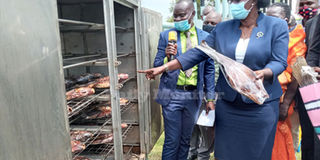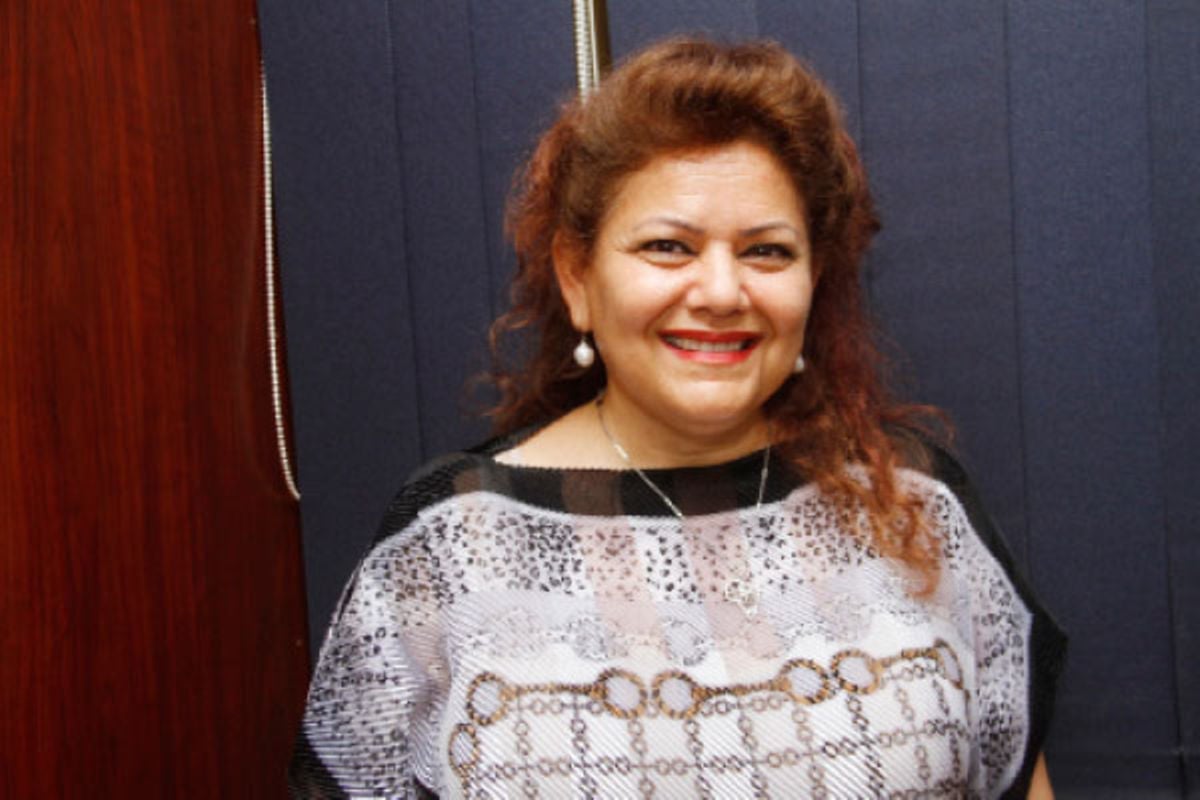How to earn more from your fish

State minister for Fisheries Hellen Adoa holds a sample of smoked fish. PHOTO/LOMINDA AFEDRARU.
What you need to know:
- Traditional smoking method is done in the open, making the fish prone to spoilage from rain and external contamination.
The traditional method of fish-smoking sees farmers spending many hours tending to fish laid out on mesh over smoking coals. Health hazards from smoke inhalation are high, while the output from such intensive labour is often low.
That is now changing with the introduction of new smoking ovens called kilns by agronomists at Agricultural Engineering and Appropriate Technology Research Centre (AEATREC) under a programme funded by Naro.
Innovation
Since 2013, AEATREC has worked on developing the NAROFIK-3-D, NAROFIK-3-D4 and NAROFIK-3-D6, an improved fish smoking and drying oven technology. The ovens have capacity of drying 200 kilogrammes, 500 kilogrammes and 700 kilogramme of fish respectively. They cost Shs50m and Shs70m depending on their sizes.
The oven can be purpose built, or the smoke-capturing chimney, oil-catching trays and other elements can be added to an existing oven.
It is designed to improve fuel-efficiency in fish-smoking by encapsulating heat and smoke. It also addresses health hazards suffered by small-scale fish dryers – the vast majority of whom are women.
The agronomists at AEATREC contend this new technology will widen the export market for the farmers.
“Uganda could not export smoked fish to foreign markets especially Europe because her smoked fish contained up 40,000 parts per billion (ppb) carsinogens of polycyclic aromatic hydro carbons (PAH) that cause cancer,” says Alphonso Candia a fish agronomist at AEATREC.
The traditional smoking method is done in the open, making the fish prone to spoilage from rain and external contamination. Strong winds can lengthen the process and often results in lesser-quality fish that sell at lower prices.
Advantages
“Introducing the new ovens will help to make the fish value chain in Uganda more productive and profitable for the poorest families,” said Candia.
“We are planning to extend the availability of the new technology to other parts of the country,” he said.
This requires guidelines to be prepared in local languages and disseminated, and extension workers trained to advise communities on the construction and use of the ovens.
Candia says the kiln has a number of advantages which include processing high quality processed smoked fish, reduced cancer compounds from 44,000 ppb to one ppb thereby meeting international standards.
How the kiln operates
John Yaweh, a research officer at the Institute explained that fish smoke kilns exited in the 1930’s but were not modernised.
The NAROFIK series comprise of four individual components namely smoke generation unit that produces hot smoke for obtaining the required flavour in smoked fish.
Smoke delivery system which conveys the generated smoke into the filter, the smoke filter and dehydration chamber whose functions are to filter the smoke into pure smoke and the dehydration component is where fresh fish is placed on stainless still chambers for processing into final product.
In the last chamber flavoured filtered smoke which are cancer free will be imparted on the fish after which the fish is dehydrated to the required consumer taste and hardness.
Benefits ... Farmer’s testimony
Constructing the first oven at Kiyindi Islands in Buikwe District cost Pecos Logoso and her group members millions of shillings – relatively expensive for small-scale fishing communities. However, the oven is shared among many families and expanding it to other communities will likely rely on micro-finance support from the government, development institutions, NGOs or the private sector.
Logoso is already seeing the benefits. “Before, I could only process 16 to 40 kilogrammes of fish per day, but with the new ovens I can smoke 100 kilogrammes per day,” she said with a smile.
Logoso, the secretary of Kiyindi Women Fishing Association told Seeds of Gold that their association has 60 members. It was established in 2010 and they are a beneficiary of the kiln.




